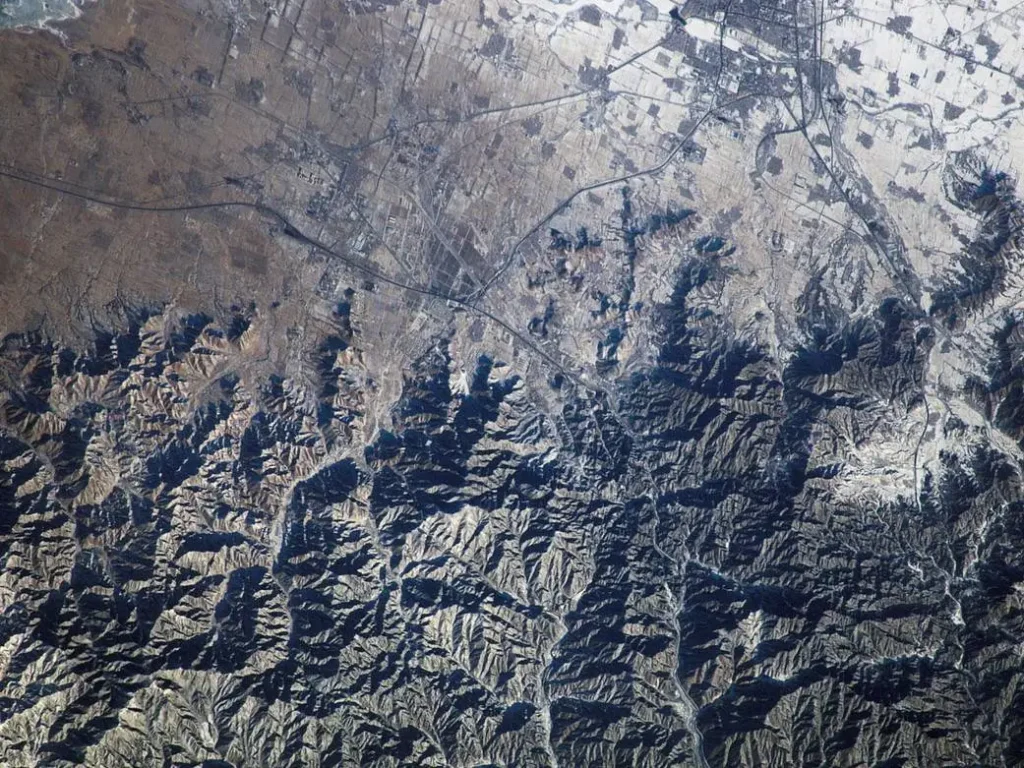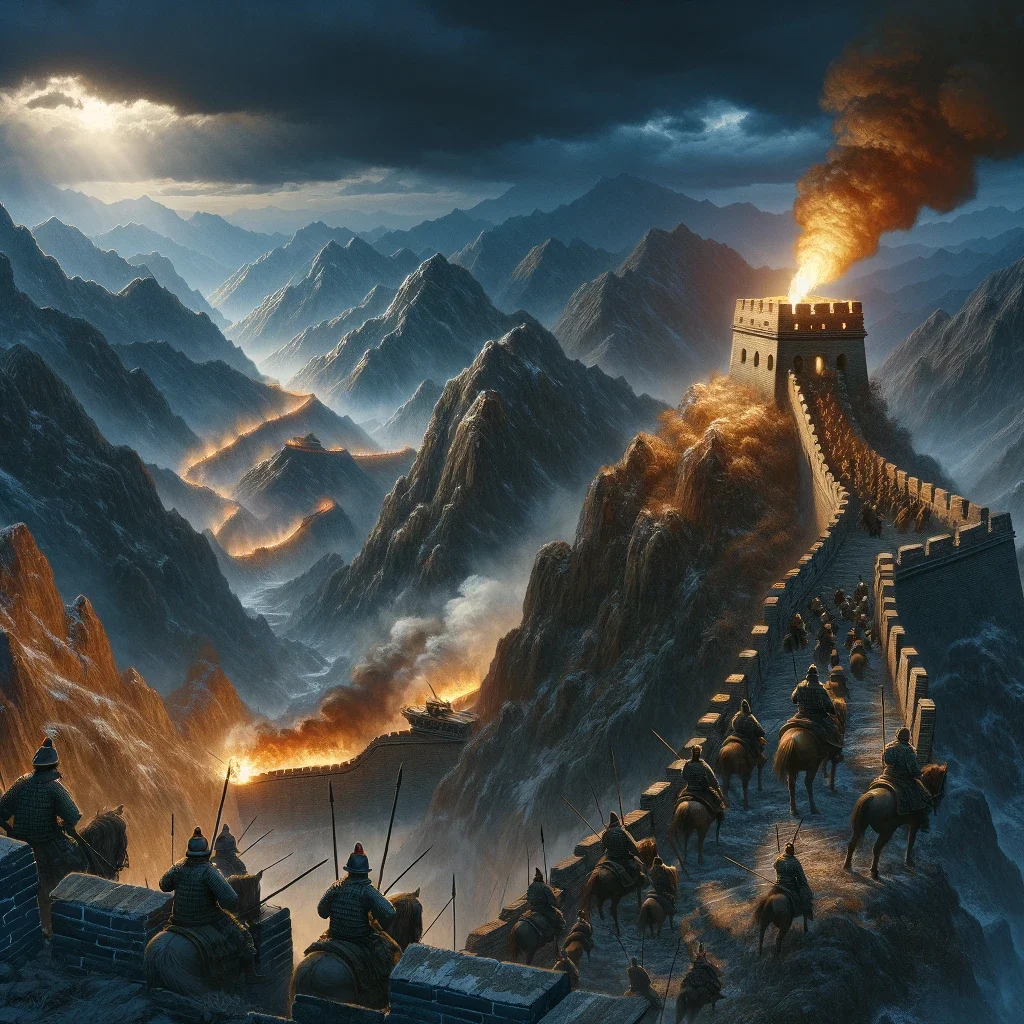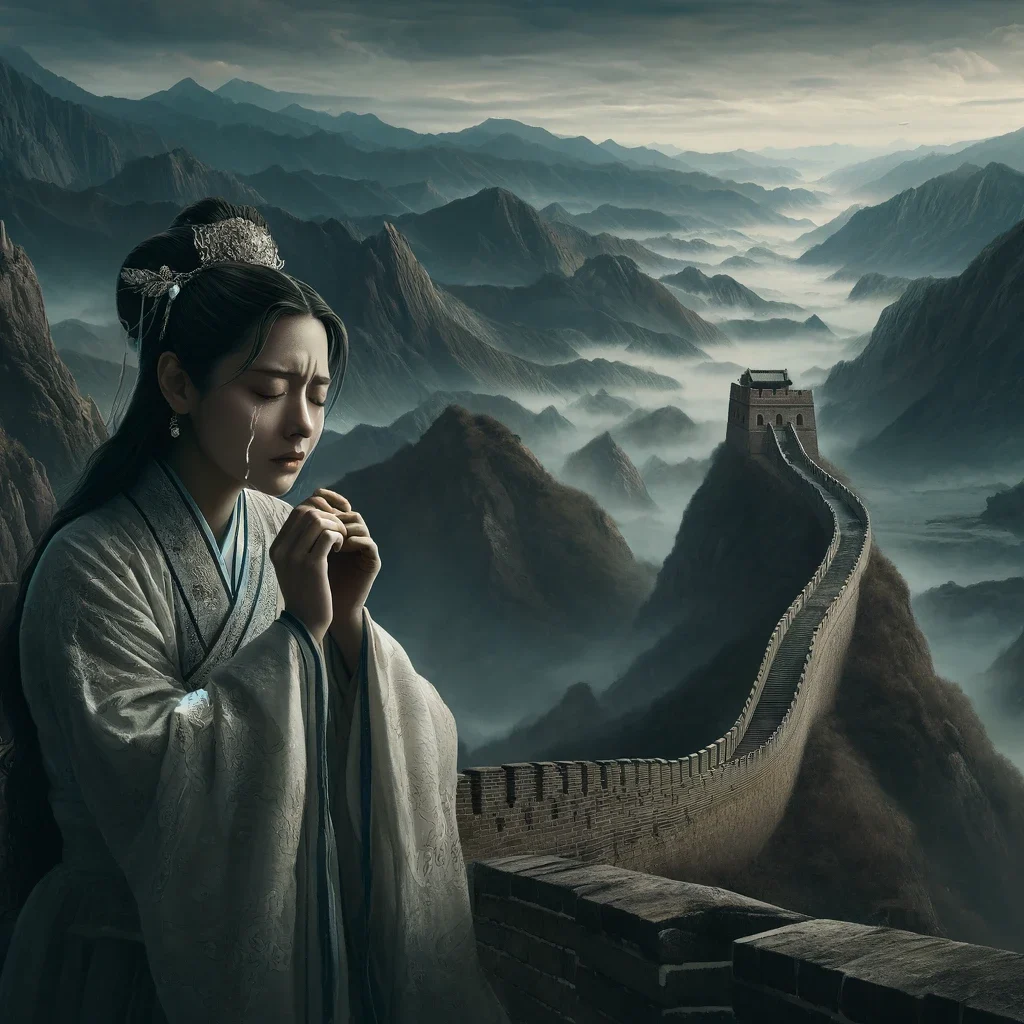Contents
In the Beginning
The Great Wall of China is one of the greatest architectural feats in the history of human civilization. Initially built more than 2,000 years ago during the Spring and Autumn and Warring States periods, it was linked after the unification of China under the Qin Dynasty to form what we now know as the Great Wall, further expanded on a massive scale during the Han and Ming dynasties. Its construction, vast and majestic, is recognized as one of the wonders of the world. Located in northern China, it stretches from Shanhaiguan in the east to Jiayuguan in the west. By 1990, a Chinese individual who trekked its entire length recorded a distance of 6,700 kilometers on their pedometer. Since then, it has been universally referred to as “the Great Wall” or the “Great Wall of 10,000 Li,” celebrated alongside the Pyramids of Egypt, the Roman Colosseum, and the Leaning Tower of Pisa as one of the New Seven Wonders of the World.
Why Was It Built?
The main body of the Great Wall is a sprawling series of tall fortifications that stretch for thousands of miles, mostly built atop the highest mountain ridges, tracing the contours of the endlessly winding mountains and shaping a dragon ‘龍’ that leaps and soars with great momentum and majesty, thus becoming a symbol of the Chinese nation. Distributed along these thousands of miles of fortifications are hundreds of strategic passes and narrows, and thousands of watchtowers and beacon towers, breaking the monotony of the wall and rendering the undulating terrain even more rugged and precipitous, filled with immense artistic charm. In other words, the Great Wall of China represents the world’s longest and largest military defense project from the era of cold weapons, embodying the blood, sweat, and wisdom of our ancestors. It stands as a symbol and pride of the Chinese nation.
Can the Great Wall Be Seen from Space?
Years before human entry into space, there indeed was a belief that the Great Wall was the only man-made structure visible from space. Most arguments supporting this view were superficial, but Richard Halliburton mentioned in his 1938 publication “The Book of Marvels: The Orient” that many astronomers had stated that if one were to observe from the moon with the naked eye, the only man-made structure visible would be the Great Wall. However, the reality turned out to be quite different.
Before 1961, no human had truly ventured into space, so no one could definitively say whether or not the Great Wall was visible from space. Yet, after humanity’s inaugural journey into space that year, many myths were dispelled. Seeing the Great Wall from space turned out to require exceptionally clear visual conditions and favorable weather, and even then, it appeared indistinct at best.
However, in the context of ancient Chinese culture, the Great Wall can be understood as a dragon ‘龍’, hidden in the high mountains, capable of soaring and hiddon before the wind. After Seeing GASA’s photos from space, we understand why the ancients were created the Great Wall!

The Construction of the Great Wall Through Human History
The construction of the Great Wall spanned over two millennia, according to historical records, beginning with the Square Wall built by the Chu state in the 7th century BC, continuing until the Ming dynasty (1368-1644). During this time, over 20 feudal states and dynasties contributed to its construction, with the lengths of the wall built during the Qin, Han, and Ming dynasties each exceeding 6,000 kilometers.
The Great Wall During the Warring States Period:
Since the Warring States period, over 20 feudal states and dynasties have constructed segments of the wall. Initially erected by the Chu state to defend against northern nomadic tribes or enemy states, Qi, Yan, Wei, Zhao, and Qin soon followed, building their own sections for similar defensive purposes.
In the Qin Dynasty:
The Qin dynasty, under China’s first emperor, Qin Shi Huang, was particularly notable for the scale of its construction efforts. Mobilizing 300,000 people, it achieved a monumental feat in human architectural history. Its primary purpose was to prevent invasions from the Xiongnu in the north and to protect the Central Plains’ economic and cultural development. After unifying the six states, Qin Shi Huang commissioned General Meng Tian to lead a northern campaign against the Xiongnu, interlinking the walls of the various states from Linyao in the west to Liaodong in the east, thus forming what is known today as the Great Wall, primarily the sections seen from the Ming period.
The Han Dynasty:
The Han Dynasty continued the work, completing a section that stretched nearly 10,000 kilometers from the fortress of Daxia in the west to the banks of the Heilongjiang River in the east. This stretch of the wall, with half of the ancient Silk Road running alongside it, marked it as the longest wall in history.
The Ming Dynasty’s Great Wall:
To fend off invasions from the Tatars and Oirats, the Ming dynasty never ceased its construction efforts. From the Hongwu to the Wanli period, through 20 major constructions, a formidable barrier stretching 6,700 kilometers from Jiayuguan in Gansu to Hushan in Liaoning was erected.
The functions of the Ancient Great Wall
The primary purpose of the Great Wall was as a defensive barrier, protecting China from invasions by nomadic tribes from the north. Historically, the northern border areas of China were frequently threatened by nomads such as the Xiongnu, Mongols, and Jurchens, and the Great Wall effectively blocked these invaders.
Surveillance and Information Transmission:
Along the Great Wall were beacon towers and watchtowers used for monitoring enemy movements and transmitting urgent messages through beacon fires. When enemy troops were spotted, the defenders would light beacons on the towers, and the neighboring towers would continue the signal, creating a rapid communication network.
Regulating Trade and Migration:
The gates of the Great Wall served as crucial checkpoints for inspecting and taxing people and goods moving in and out of the Central Plains, thereby effectively regulating trade and migration.
Ancient Weapons Used
China’s National Bureau of Archaeology discovered a site on the western section of the Badaling Great Wall in Beijing, where 59 neatly arranged “stone thunder” were unearthed. So, what exactly is stone thunder?
Stone thunder, known as the “ancient hand grenade,” was a common weapon among the defenders of the Great Wall during the Ming Dynasty. These inconspicuous stones, with a circular hole in the middle for filling with gunpowder, could be thrown after sealing the opening. They could not only hit the enemy but also explode, generating powerful blasts and achieving surprising victories.
Whenever battles occurred along the ancient Great Wall, a vast array of weapons for defending the fortress were brought into play. These defensive weapons included a variety of cold weapons as well as numerous types of firearms. Cold weapons encompassed melee weapons such as knives, spears, and clubs, as well as ranged weapons like bows and arrows, and flying hooks. The soldiers’ armor and shields also became more sophisticated. In the later periods, the variety and power of firearms used for long distances increased significantly, including muskets and cannons, and even “bombs” launched by cannons.
It was precisely because of the existence of the Great Wall. For instance, since the founding of the nation, the Ming dynasty established Beijing as the official capital, which is also the city closest to the Great Wall. At that time, once the beacon towers of the Great Wall were lit, it signified an enemy invasion, and the ancient dynasties of China received the urgent signal of an invasion warning for the first time. Thus, at that moment, the war had already begun.
Modern Landscapes of the Great Wall
Now, among the vast landscapes of the Great Wall across China, the section at Badaling in Beijing stands out for its exceptional sturdiness and preservation, making it the premier spot for experiencing the majesty of the Great Wall. In addition, there are other notable sections such as Jinshanling, Mutianyu, Simatai, and Gubeikou. The Huangyaguan section in Tianjin, Shanhaiguan in Hebei, and Jiayuguan in Gansu are also renowned destinations for Great Wall enthusiasts. The Badaling section in Beijing, in particular, is celebrated for its robust construction and excellent state of preservation, ranking it among the best places to visit the Great Wall. Other significant sections include Jinshanling, Mutianyu, Simatai, and Gubeikou, as well as Huangyaguan in Tianjin, Shanhaiguan in Hebei, and Jiayuguan in Gansu, all of which are famous for their historical significance and breathtaking views. These sites, including Badaling, Mutianyu, Huangyaguan, Shanhaiguan, Jinshanling, Yanmenguan, Jiayuguan, and the ancient Great Wall of Ningxia, offer a glimpse into the past and the enduring spirit of the Chinese people.
As time marches on and things change, visiting the remnants of the Great Wall today allows one not only to witness its majestic presence winding through mountains and ridges but also to appreciate the profound wisdom and bravery that the Chinese nation demonstrated in creating history. Should you stand upon the Great Wall for the first time, experiencing the famous sensation of “surveying the distance and pondering the past,” it’s as if the ancient battlefields, with their clashing iron and charging steeds, come alive before your eyes.
Echoes of Sorrow: A Famous Poem from the Battlefield
In ancient times, there was a famous poem:
葡萄美酒夜光杯,欲饮琵琶马上催。
醉卧沙场君莫笑,古来征战几人回。”At the feast, the sweet and mellow grape wine fills the luminous cups, just as one is about to drink heartily, the pipa starts to play promptly, as if urging one to go off to war. Should you find me drunkenly sprawled on the battlefield, please don’t laugh. After all, only a few warriors ever go home.”
The author of this poem, ‘王翰’. We can imagine that in ancient times, during temporary halts in battle, there were both the pipa and grape wine. When the battle commenced, riding your horse, you would rush through your own territories along the Great Wall and begin the fight. However, the number of warriors who truly survived after the battles was not many.
The Story of the Great Wall’s Legend
The Story from the Warring States period:
It is said that during the Warring States period, there was a king who deeply loved a woman, a love that surpassed everything. This woman would not smile, but the sudden sight of fire at night could make her laugh. So, to demonstrate his ability to send messages at unparalleled speed, he devised a plan.
On a tranquil night, devoid of the threat of war, the horizon suddenly lit up with fires, one after another, like shooting stars crossing the sky. This was the ancient world’s fastest method of communication; once the beacon fires were lit, it signified urgent military intelligence, prompting soldiers across the nation to assemble immediately in preparation to repel invaders. However, behind this series of fires, there was no enemy, only the king’s profound declaration of love.
While this act was intended as a personal gesture of goodwill, it caused significant chaos and dissatisfaction. Soldiers assembled in vain, the public panicked, and national resources were wasted. This inconsiderate display of affection ultimately led to a loss of trust in the king, even sparking resentment and ridicule towards his rule. Soon after, the country perished in the turmoil of the Warring States period, becoming a forgotten chapter in history.
The story of Meng Jiangnü weeping from the Qin Dynasty:
The story is set during the Qin Dynasty when Emperor Qin Shi Huang ordered the construction of the Great Wall to fend off invasions. The construction was a massive undertaking, requiring the labor of countless workers, among whom was Meng Jiangnü’s husband, Fan Xiliang. Like many others, Fan Xiliang was forcibly taken from his home to work on the daunting project. Missing her husband dearly, Meng Jiangnü decided to seek him out at the Great Wall.
After enduring numerous hardships, Meng Jiangnü finally reached the Great Wall, only to learn that her husband had died from exhaustion and his body was lost among the many who perished. Overcome with grief, Meng Jiangnü’s cries at the base of the Great Wall were so powerful that they caused a section of the wall to collapse, revealing her husband’s remains. She was then able to give him a proper burial. This story has since become a symbol of faithful love and resistance against cruel oppression in Chinese history.
The legend of Meng Jiangnü weeping over the Great Wall reflects the ancient Chinese laborers’ suffering and highlights the value placed on kinship and love. It also represents the people’s spirit of resistance against injustice. The story remains a classic tale in Chinese culture, passed down through generations.
Love legends about the Great Wall, although not necessarily rooted in specific historical events, reflect people’s emotional attachment and cultural imagination associated with the Great Wall. Beyond its practical use and cultural significance in ancient times, the Great Wall has frequently appeared in modern films and television shows, serving as a backdrop for exploring themes of human courage, wisdom, and the struggle against external threats. Although fictional, it uses the Great Wall as a setting to explore the themes of courage and unity in the face of adversity, leaving a lasting impression of this ancient structure in the hearts of a global audience.
In the End, but In the Beginning
Today, it doesn’t matter whether they are from beside the Great Wall or from thousands of miles away, whether they are in their youth or perhaps both are elderly. Whether the time was 2,000 years ago or right now. The two of them are walking hand in hand together on the road. With love, no matter where they go.
The Great Wall of China, On the mountaintop, Caressed by millennia of winds, Stands Majestic!







